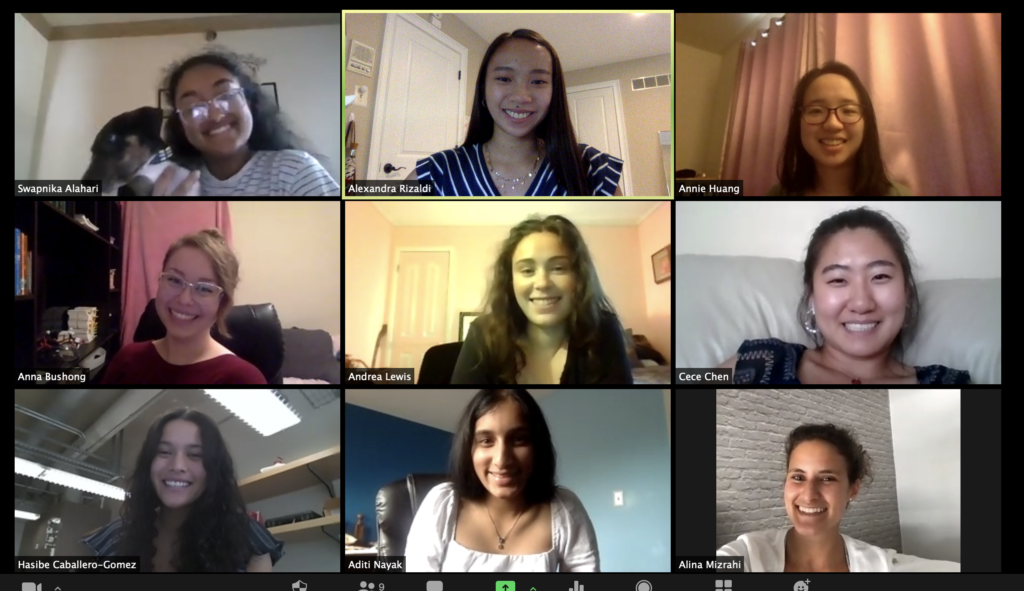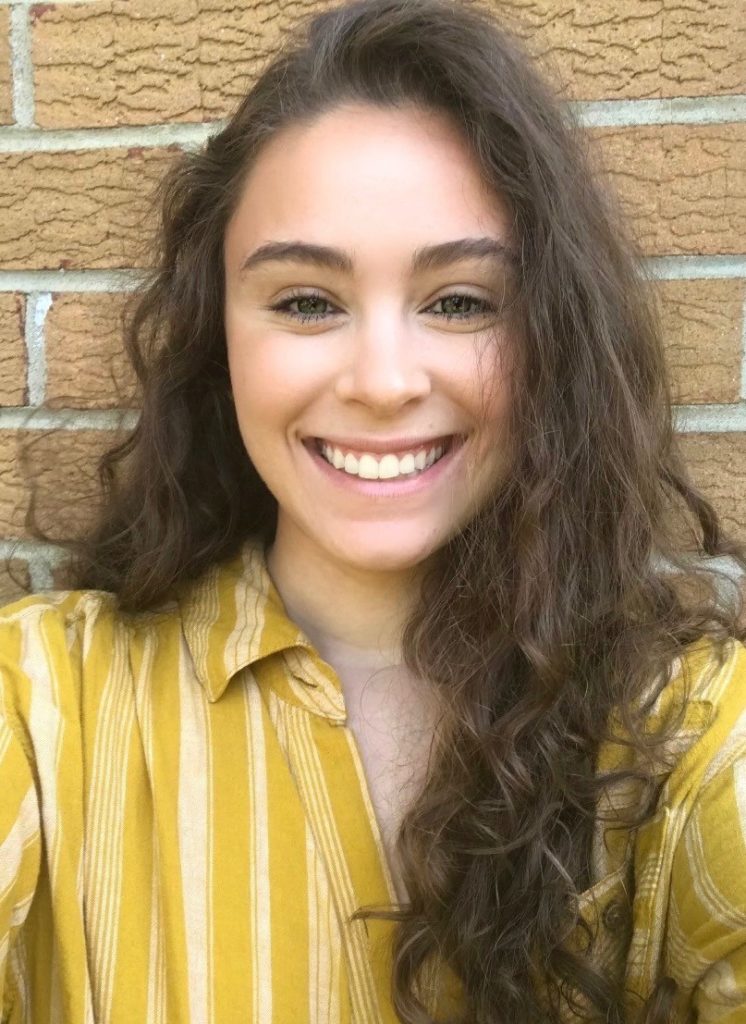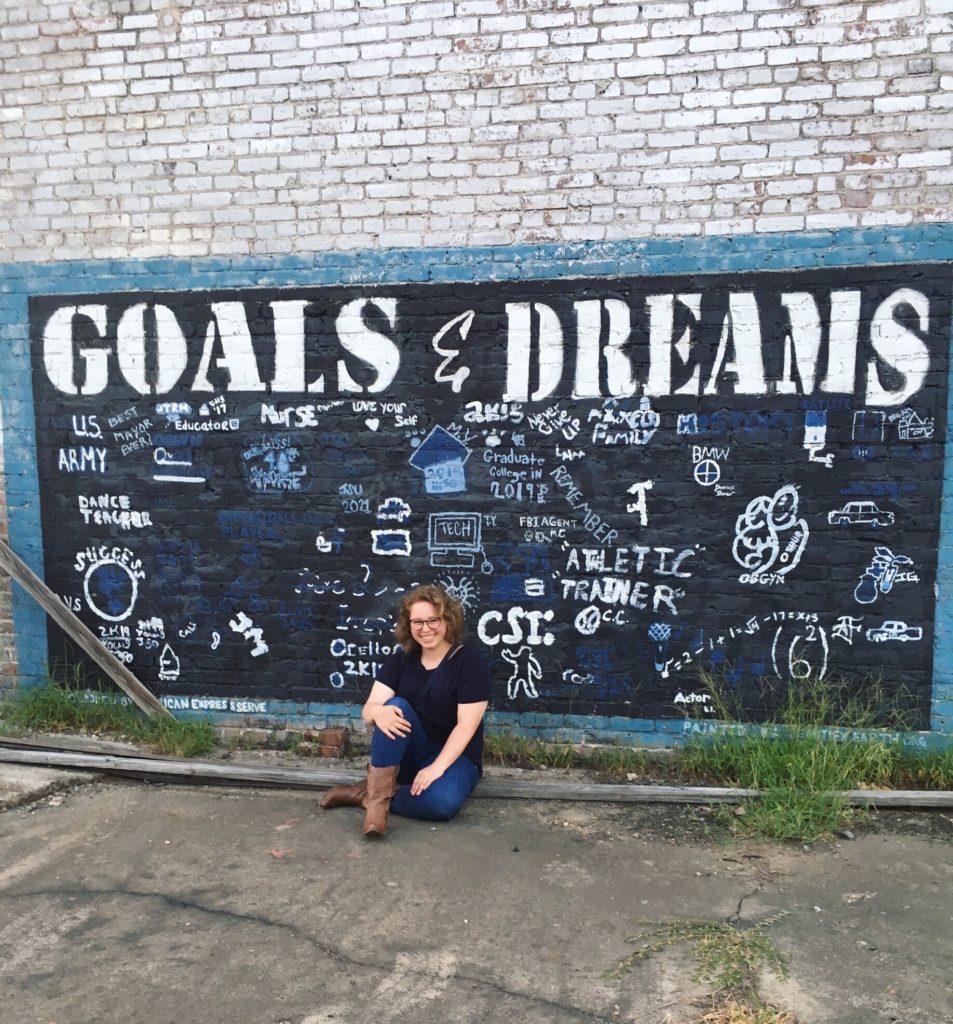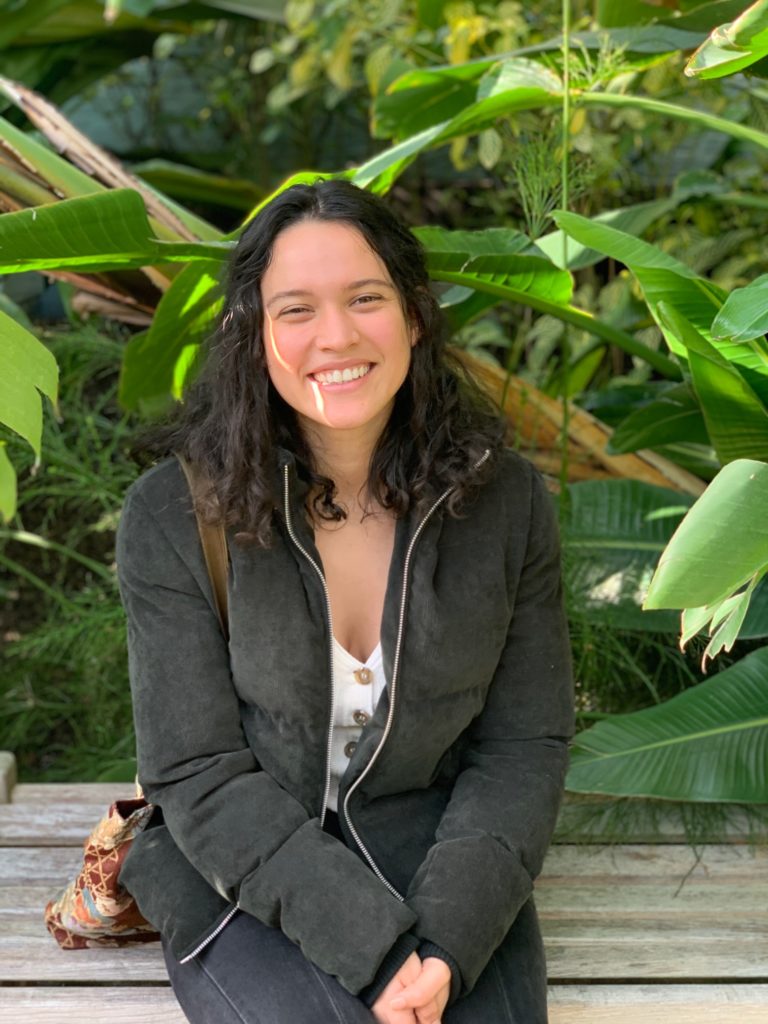
Aditi Nayak
 My name is Aditi Nayak, and I am from West Windsor, New Jersey. I am currently a rising sophomore at Amherst College, majoring in Neuroscience and Mathematics. Through STEER, I had the opportunity to work with Dr. Veasey as part of the Veasey Sleep & Circadian Neurobiology lab. Recent studies associate early childhood lead (Pb) exposure with sleep issues as early as preadolescence. The Veasey lab is trying to explain this correlation by identifying the mechanisms through which developmental lead exposure impacts the nervous system in utero. To determine this mechanism, we must figure out which portions of the brain are (and are not) impacted by lead exposure. This summer, I analyzed images of the lateral hypothalamus to see if its orexinergic neurons (neurons related to the sleep/wake cycle) and microglia are injured by lead exposure. My analysis demonstrates that there are enduring changes in the projections of orexinergic neurons and microglia, which corresponds to lasting sleep issues.
My name is Aditi Nayak, and I am from West Windsor, New Jersey. I am currently a rising sophomore at Amherst College, majoring in Neuroscience and Mathematics. Through STEER, I had the opportunity to work with Dr. Veasey as part of the Veasey Sleep & Circadian Neurobiology lab. Recent studies associate early childhood lead (Pb) exposure with sleep issues as early as preadolescence. The Veasey lab is trying to explain this correlation by identifying the mechanisms through which developmental lead exposure impacts the nervous system in utero. To determine this mechanism, we must figure out which portions of the brain are (and are not) impacted by lead exposure. This summer, I analyzed images of the lateral hypothalamus to see if its orexinergic neurons (neurons related to the sleep/wake cycle) and microglia are injured by lead exposure. My analysis demonstrates that there are enduring changes in the projections of orexinergic neurons and microglia, which corresponds to lasting sleep issues.
Alexandra Rizaldi
 My name is Alex Rizaldi, and I am from Chadds Ford, PA (a Philadelphia suburb). I am a rising sophomore at the University of Pennsylvania studying biology on the pre-med track. The STEER lectures that highlighted environmental medicine and community-based participatory research have also driven me to pursue minors in health care management and medical sociology. This summer, under the mentorship of Dr. Blanca Himes, I have been investigating neighborhood characteristics that may be associated with COVID-19 in Philadelphia. Using public data sources and R, I mapped and analyzed zip code-level COVID-19 outcomes and neighborhood characteristics such as socioeconomic status, demographics, chronic conditions, and health behaviors. Even though I have grown up in Southeast Pennsylvania around Superfund sites and environmental justice communities like Chester, I was shocked at how little I had learned in school about these topics, so I also hope to enhance environmental health education at my middle school in the future. As my first research experience and my first in-depth exposure to the environmental health field, STEER has been monumental in helping me determine my academic and career paths. I am incredibly grateful for the opportunity to learn from talented peers and guest lecturers while developing my leadership and communication skills.
My name is Alex Rizaldi, and I am from Chadds Ford, PA (a Philadelphia suburb). I am a rising sophomore at the University of Pennsylvania studying biology on the pre-med track. The STEER lectures that highlighted environmental medicine and community-based participatory research have also driven me to pursue minors in health care management and medical sociology. This summer, under the mentorship of Dr. Blanca Himes, I have been investigating neighborhood characteristics that may be associated with COVID-19 in Philadelphia. Using public data sources and R, I mapped and analyzed zip code-level COVID-19 outcomes and neighborhood characteristics such as socioeconomic status, demographics, chronic conditions, and health behaviors. Even though I have grown up in Southeast Pennsylvania around Superfund sites and environmental justice communities like Chester, I was shocked at how little I had learned in school about these topics, so I also hope to enhance environmental health education at my middle school in the future. As my first research experience and my first in-depth exposure to the environmental health field, STEER has been monumental in helping me determine my academic and career paths. I am incredibly grateful for the opportunity to learn from talented peers and guest lecturers while developing my leadership and communication skills.
Alina Mizahi
 My name is Alina Mizahi and I am from Mexico City but my family lives in Hollywood, Florida. I am a rising senior at the University of Pennsylvania, majoring in Cognitive Science and Political Science. This summer, I had the opportunity to work with Dr. Jianghong Liu on research regarding the neurocognitive effects of lead exposure. Using data from a cohort in Jintan, China, Dr. Liu uses longitudinal data to understand the effects that lead can have on children’s development. Among other things, Dr. Liu is working to understand how dietary lead can affect cognitive outcomes in school children. This summer, I analyzed the existing literature regarding both the relationship between dietary patterns and cognition and the link between lead and cognitive functioning in children. In our manuscript we describe how we found an association between lead-related dietary pattern and IQ scores. I also drafted a poster that will be presented at the conference of the International Society for Environmental Epidemiology.
My name is Alina Mizahi and I am from Mexico City but my family lives in Hollywood, Florida. I am a rising senior at the University of Pennsylvania, majoring in Cognitive Science and Political Science. This summer, I had the opportunity to work with Dr. Jianghong Liu on research regarding the neurocognitive effects of lead exposure. Using data from a cohort in Jintan, China, Dr. Liu uses longitudinal data to understand the effects that lead can have on children’s development. Among other things, Dr. Liu is working to understand how dietary lead can affect cognitive outcomes in school children. This summer, I analyzed the existing literature regarding both the relationship between dietary patterns and cognition and the link between lead and cognitive functioning in children. In our manuscript we describe how we found an association between lead-related dietary pattern and IQ scores. I also drafted a poster that will be presented at the conference of the International Society for Environmental Epidemiology.
Andrea Lewis
 My name is Andrea Lewis. I am a recent graduate of West Chester University with a major in Environmental Health and minor in Health Education. The focus of my research in the STEER program stemmed from a previous research project in my field of interest, water quality as it relates to human health. In the Spring of 2019, I completed my first undergraduate research project to determine if extreme climate events, particularly heavy rainfall, have an association with disease prevalence in Philadelphia, PA. This summer I worked with Dr. Heather Burris investigating a possible association between the concentrations of chlorine disinfectant byproducts in the Philadelphia municipal water supply the vaginal microbiome. These byproducts’ effects on human health and the significant associations between racial and ethnic disparities among Philadelphian citizens have made the social and environmental implications of this research extremely important.
My name is Andrea Lewis. I am a recent graduate of West Chester University with a major in Environmental Health and minor in Health Education. The focus of my research in the STEER program stemmed from a previous research project in my field of interest, water quality as it relates to human health. In the Spring of 2019, I completed my first undergraduate research project to determine if extreme climate events, particularly heavy rainfall, have an association with disease prevalence in Philadelphia, PA. This summer I worked with Dr. Heather Burris investigating a possible association between the concentrations of chlorine disinfectant byproducts in the Philadelphia municipal water supply the vaginal microbiome. These byproducts’ effects on human health and the significant associations between racial and ethnic disparities among Philadelphian citizens have made the social and environmental implications of this research extremely important.
Anna Bushong
 My name is Anna Bushong and I am from Jacksonville, Florida. I am a rising senior attending Centre College and I am double majoring in Biology & Environmental Studies. This summer I worked with Dr. Field to research the public health implications of hydraulic fracturing in Pennsylvania. Specifically, I investigated the relationship between severe asthma exacerbation and unconventional natural gas development using only publicly available data. This was pursued out of concern for the regulatory implications of the EPA’s proposed ‘secret science’ rule, which could threaten the respiratory health of Pennsylvanians living in close proximity to well sites by weakening environmental regulations.
My name is Anna Bushong and I am from Jacksonville, Florida. I am a rising senior attending Centre College and I am double majoring in Biology & Environmental Studies. This summer I worked with Dr. Field to research the public health implications of hydraulic fracturing in Pennsylvania. Specifically, I investigated the relationship between severe asthma exacerbation and unconventional natural gas development using only publicly available data. This was pursued out of concern for the regulatory implications of the EPA’s proposed ‘secret science’ rule, which could threaten the respiratory health of Pennsylvanians living in close proximity to well sites by weakening environmental regulations.
Annie Huang
 My name is Annie Huang and I’m a rising junior at Brown University studying Biochemistry and Molecular Biology. I’m interested in environmental health as it relates to exposures and environmental toxicology. This summer I worked in Dr. Rebecca Simmons’ lab on a project analyzing the intergenerational impact of BPA exposure in pancreatic islets cells of male offspring. BPA is a commonly used chemical found in plastics and cans that humans are exposed to mainly through ingestion. It also has a nonmonotonic dose response curve, so it has a nonlinear relationship between exposure and response, and thus, understanding the different mechanisms of lower and higher dose exposures is important. BPA exposure at lower and higher doses have been found to cause decreased insulin secretion in pancreatic islets cells. However, some of the mechanisms and pathways of how lower and higher exposure of how BPA mediates reduced insulin secretion are unknown. Thus, this summer I analyze RNAseq data to understand new mechanisms of how lower and higher exposures of BPA decrease pancreatic islet cell function. This project is relevant to supporting regulation of BPA levels and analyzing general mechanisms of pancreatic beta-cell function in Type 2 Diabetes.
My name is Annie Huang and I’m a rising junior at Brown University studying Biochemistry and Molecular Biology. I’m interested in environmental health as it relates to exposures and environmental toxicology. This summer I worked in Dr. Rebecca Simmons’ lab on a project analyzing the intergenerational impact of BPA exposure in pancreatic islets cells of male offspring. BPA is a commonly used chemical found in plastics and cans that humans are exposed to mainly through ingestion. It also has a nonmonotonic dose response curve, so it has a nonlinear relationship between exposure and response, and thus, understanding the different mechanisms of lower and higher dose exposures is important. BPA exposure at lower and higher doses have been found to cause decreased insulin secretion in pancreatic islets cells. However, some of the mechanisms and pathways of how lower and higher exposure of how BPA mediates reduced insulin secretion are unknown. Thus, this summer I analyze RNAseq data to understand new mechanisms of how lower and higher exposures of BPA decrease pancreatic islet cell function. This project is relevant to supporting regulation of BPA levels and analyzing general mechanisms of pancreatic beta-cell function in Type 2 Diabetes.
Cece Chen
 Hi! My name is Cece Chen and I am a rising senior at the University of Pennsylvania, majoring in biochemistry and minoring in healthcare management & neuroscience. I am originally from Cincinnati, Ohio (so a huge fan of Graeter’s ice cream and Skyline Chili) and since STEER was remote this summer, I also conducted my research from Cincinnati! I have always been focused on small-scale research, looking at cells and tissues, but this summer I had the opportunity to be a part of STEER and broaden my perspective by thinking about populations.
Hi! My name is Cece Chen and I am a rising senior at the University of Pennsylvania, majoring in biochemistry and minoring in healthcare management & neuroscience. I am originally from Cincinnati, Ohio (so a huge fan of Graeter’s ice cream and Skyline Chili) and since STEER was remote this summer, I also conducted my research from Cincinnati! I have always been focused on small-scale research, looking at cells and tissues, but this summer I had the opportunity to be a part of STEER and broaden my perspective by thinking about populations.
I am especially interested in studying liver diseases. This summer, I had the honor of working under the mentorship of Dr. Rebecca Wells on a project focused on the toxin model of biliary atresia (BA). Biliary atresia is a disease in babies that causes bile duct obstruction in utero and results in the neonate’s inability to drain bile, which eventually leads to liver failure. Significantly, BA is the leading indication of pediatric liver transplant. Although the cause of BA is unknown, preliminary studies seem to point to environmental insults. Because the Wells lab has isolated a biliary toxin in the form of biliatresone in the past, we wanted to delve deeper in exploring the toxin model of BA. We are hoping to shed some light on this so that better prevention and treatment options can be found.
Since biliatresone is only found in one plant in the outbacks of Australia, it’s unlikely that pregnant mothers worldwide are exposed to this toxin. So, we wanted to look at more common/human accessible compounds similar to biliatresone that pregnant women might be exposed to. My project is looking to investigate 12 commercially available electrophilic products, all structurally or functionally similar to biliatresone, and their impacts on cholangiocytes. I researched and prioritized the 12 compounds of interest. So far we have conducted an initial dosage study on 4 of these compounds. For these, cells were treated with 4 different dosages of each compound and stained with CK19 (general cholangiocyte marker) and phalloidin (stains actin). Using ImageJ, I was able to quantify staining to determine the level of cell damage and death. This helped to narrow down dosage ranges to test, which I will do as I continue with this project during the school year. Once the ideal dose is isolated, I will test each compound in vitro via the spheroid model and draw conclusions about biliary toxicity for each compound.
The STEER program has been such a wonderful experience and I have learned so much from the lectures, field trips, and from my peers. Learning more about environmental justice and the research that promotes it has been super eye opening and has definitely motivated my interest in thinking about how science can be conducted as an advocate for environmental health.
Hasibe Caballero-Gomez
 My name is Hasibe Caballero-Gomez. I’m originally from Los Angeles, California, and currently study at Haverford College. I am a Chemistry major and environmental science minor. This summer I worked for Professor Pepino to investigate policy solutions that could decrease childhood lead poisoning for at risk communities in Philadelphia, PA.
My name is Hasibe Caballero-Gomez. I’m originally from Los Angeles, California, and currently study at Haverford College. I am a Chemistry major and environmental science minor. This summer I worked for Professor Pepino to investigate policy solutions that could decrease childhood lead poisoning for at risk communities in Philadelphia, PA.
Swapnika Alahari
 My name is Swapnika Alahari and I am originally from Dallas, Texas. Now, I am a rising senior at the University of Miami studying Microbiology and Immunology. Since starting high school I’ve sought to expand my interest in public and community health. Previously, I have conducted research on community hepatitis work, studying the molecular pathway through which healthy cells get virally infected with hepatitis and become carcinogenic. Having seen long-term health effects in a more biologically sense, I was interested in seeing healthcare through an environmental lens.
My name is Swapnika Alahari and I am originally from Dallas, Texas. Now, I am a rising senior at the University of Miami studying Microbiology and Immunology. Since starting high school I’ve sought to expand my interest in public and community health. Previously, I have conducted research on community hepatitis work, studying the molecular pathway through which healthy cells get virally infected with hepatitis and become carcinogenic. Having seen long-term health effects in a more biologically sense, I was interested in seeing healthcare through an environmental lens.
The STEER program at the University of Pennsylvania gave me this opportunity. This summer, although we were in a pandemic, I worked with Dr. Jianghong Liu on various aspects of lead toxicity. Specifically, my research focused on the effects of dietary patterns on blood lead levels and, secondly, environmental lead on children’s aggressive behavior. In affiliation with my fellow STEER student, Alina Mizrahi, I also worked on a combined study and manuscript into the effects of lead-related dietary patterns on cognition. These various projects have been an enrichment opportunity where I was able to see the importance of preventative and protective habits.
My role, specifically, allowed me to gain valuable insight into cohesive literature reviews and scholarly writing. Due to the pandemic, I wasn’t able to go in person but virtually I tackled other aspects of research which I find extremely relevant for my future as an MD/MPH. From the STEER program, I learned a lot about the effect of environmental hazards on developmental health, as well as the need for healthy guidelines through community health policy. I have grown very appreciative of the exposure I had to environmental science and the injustices discussed through the program.




